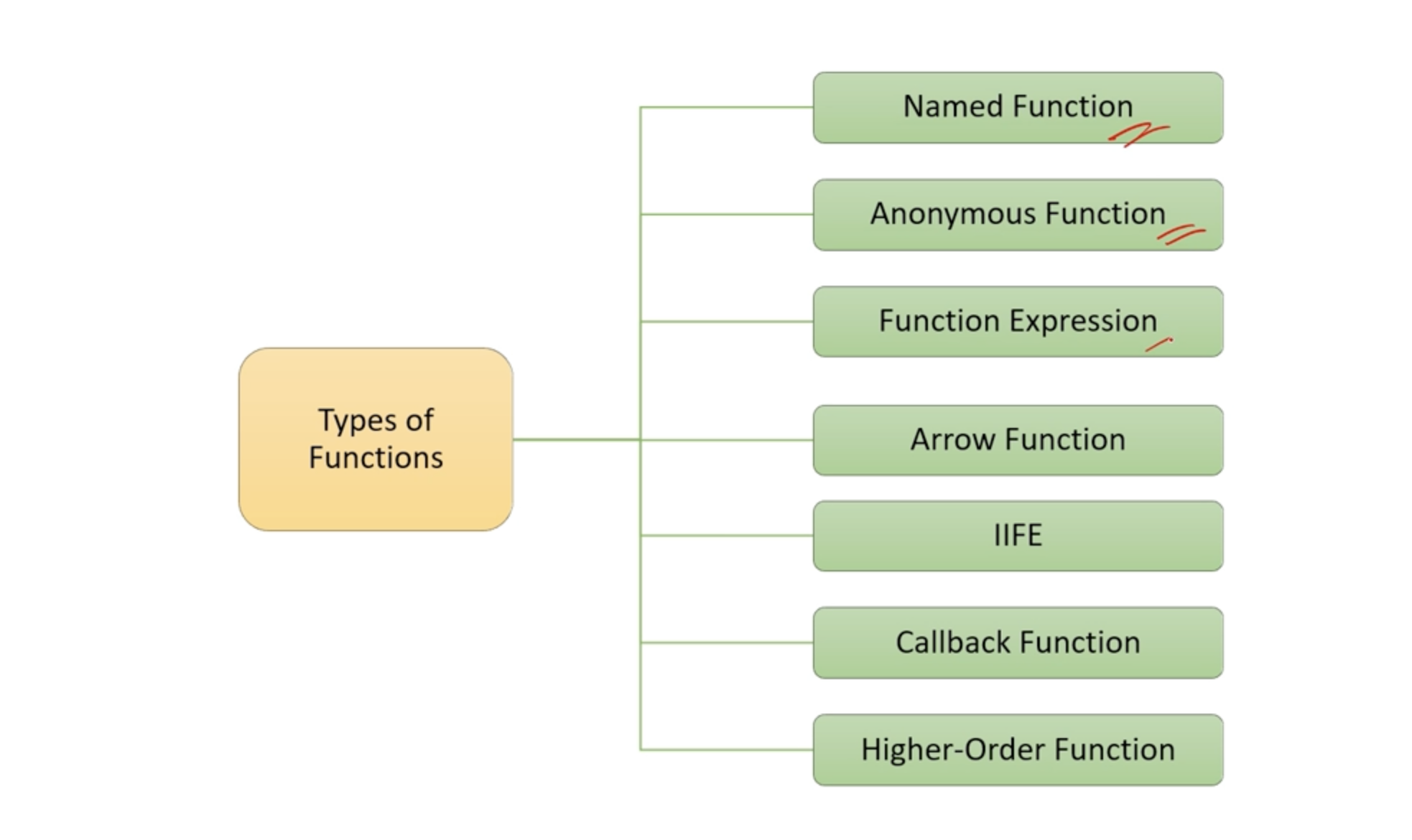A function is a reusable block of code that performs a specific task

Keywords
• first class function (a programming language is said to have first-class functions if function in that language are treated like other variables)
• named functions
• anonymous functions
• function expression
• callback functions <- a function passed as an argument
• higher-order functions
A higher order function takes a function as an argument
or
A higher order function returns a function
• arguments vs parameters
// a and b are parameters
function add( a, b ) {
}
// 3 and 4 are arguments
add(3,4)
• event handling in JS
• Pure functions
• Impure functions
• currying functions
• call, apply, bind
<html>
<head>
<script>
function talkToMeMan() {
alert("No way Jose");
}
</script>
</head>
<body>
<button onClick="talkToMeMan()">Talk to me</button>
</body>
</html>
Basic functions
Functions group lines of JavaScript together. Instead of re-writing each line you can just call the function.
Functions with arguments
<html>
<head>
<script>
function talkToMeMan( foobarName ) {
alert("No way " + foobarName);
}
</script>
</head>
<body>
<button onClick="talkToMeMan('James Brown')">Talk to me</button>
</body>
</html>Functions with return values.
<head>
<script>
// This returns the number 11
function doSomething()
{
var x=5;
var y=6;
return (x+y);
}
</script>
</head>
<body>
<button onclick="alert( doSomething() )"> click me </button>
</body>
Pure Functions
Always produces the same output for the same inputs.
Does not have any side effects.
Impure Functions
Produces different output because external values have changed.
or
Function has a side effect
Currying
Currying in JavaScript transforms a function with multiple arguments into a nested series of functions, each taking a single argument.
Advantage
Reusibility, modularity and specialisation .
Big complex functions can be broken down into small, reusable functions with fewer arguments.
Call, apply, bind
These methods provide a way to manipulate the this value and to pass arguments to functions.l
function sayHello(message) {
console.log(`${message} ${this.name}`)
}
const person = {
name: 'Boris'
}
// How to connect this to the object person
sayHello.call( person, "Hello" )
sayHello.apply( person, ["Hi"])
const greetPerson = sayHello.bind(person)
greetPerson("Greetings")
// Greetings Boris